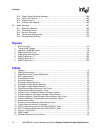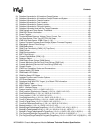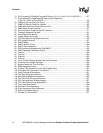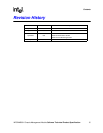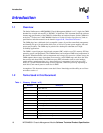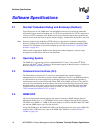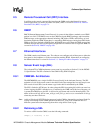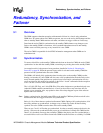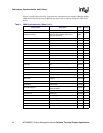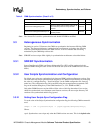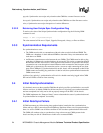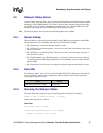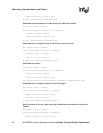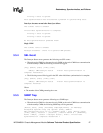
20 MPCMM0001 Chassis Management Module Software Technical Product Specification
Software Specifications
Where location is one of {cmm, blade[1-14], fantray1, PEM[1-2]}. Even though the CMM uses a
single flat SEL for system events, the ‘cmmget’ command will filter the SEL and only return
events associated with the provided location. Also, some individual FRUs may keep their own
local SELs (i.e., blades).
2.8.3 Clearing the SEL
The following command will clear the SEL on both the active and the standby:
cmmset -d clearsel -v clear
Note: Since the CMM uses a single flat SEL for system events, this command clears the entire shelf SEL,
not just a filtered subset.
2.8.4 Retrieving the Raw SEL
To retrieve the SEL in its raw format from a location, issue the following command:
cmmget -l [location] -d rawsel
2.9 Blade OverTemp Shutdown Script
The CMM software includes predefined script settings specifically for the MPCBL0001 board,
which will automatically shut down a board when the “baseboard temp” sensor on that board
crosses the upper critical threshold. This is done to prevent a runaway thermal event on the board
from occurring. If this functionality is needed when using boards other than the MPCBL0001, the
user will need to associate the name of the thermal sensor and the threshold with the board
shutdown script:
cmmset -l bladeN -d majoraction -t [temp sensor name] -v
overtempbladepoweroff [Blade Number]
Please refer to Section 18, “CMM Scripting” on page 164 for more information on assocating a
script to an event.
When using the CMM with boards other than the MPCBL0001, as long as there is no sensor name
titled "baseboard temp" associated with the particular board being used, then there is no issue
leaving these settings intact. If needed, to deactivate these settings for each physical slot, use the
command:
cmmset -l bladeN -d majoraction -t “baseboard temp” -v none
where bladeN is the blade, corresponding to the physical slot number, on which to remove the
automatic shutdown setting (blade[1-16]). Please refer to Section 18, “CMM Scripting” on
page 164 for more information on removing script actions.



